juin 2025
Histoire
Le fondateur de Sky-Frame, Beat Guhl, passe le relais à la génération suivante

He is considered one of our time's most important and famous artists: Olafur Eliasson. The Danish-Icelandic artists' often large-scale and sculptural projects and installations endeavour to intensify and expand the viewer's experience. Light and space play a central role here.
Olafur Eliasson's extensive oeuvre explores the perception and experience of space through the use of elementary materials such as light, water and air temperature. Eliasson is an expert in skilfully using light and incorporating it into his works. Using instruments such as spotlights, projectors, mirrors, colour filters, fog machines and optical lenses, he creates works of art that capture the everyday wonders of nature: Shadow plays and the glow of rainbows or reflections.
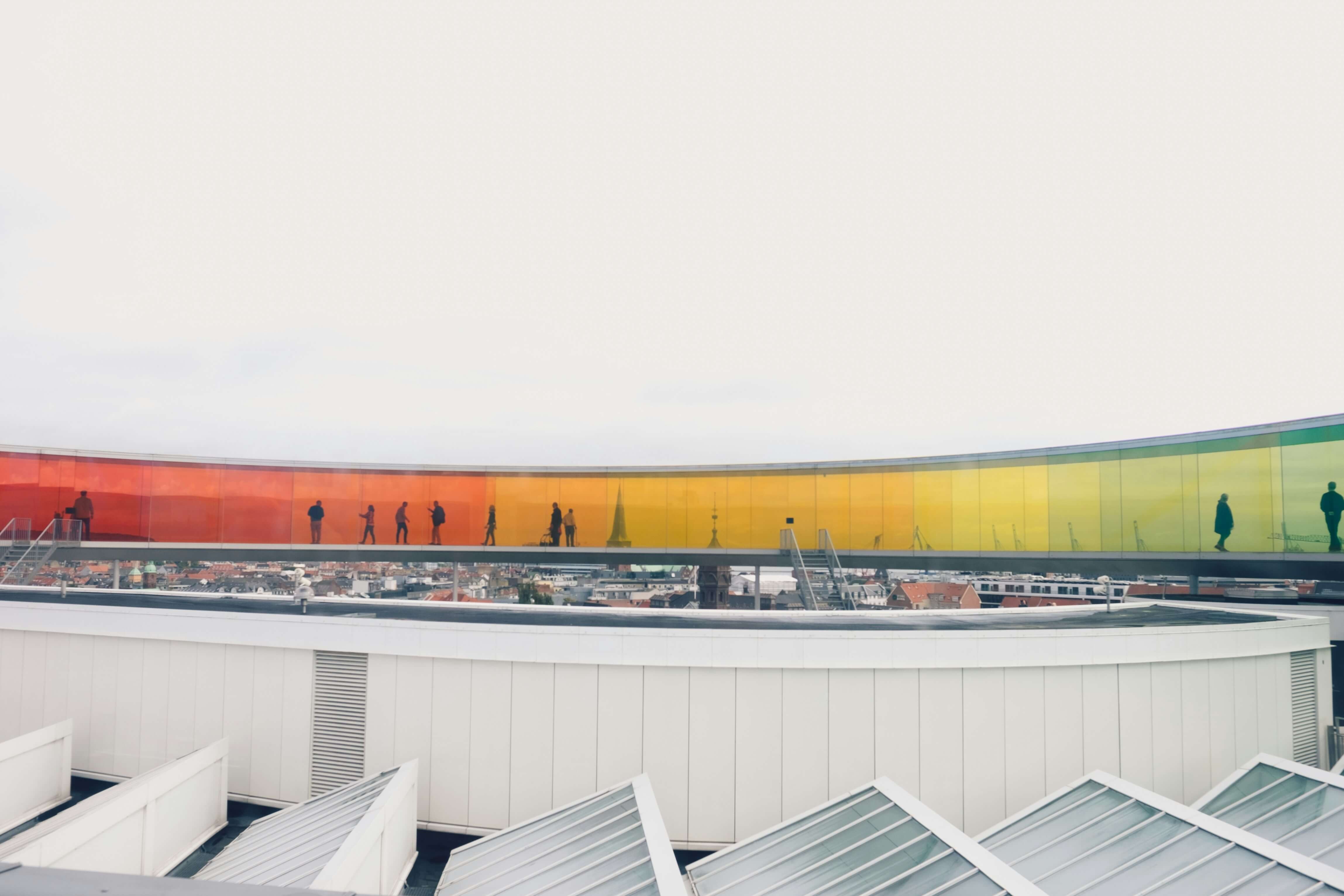 Your Rainbow Panorama Art Museum ARoS, Photo by Thomas Peham
Your Rainbow Panorama Art Museum ARoS, Photo by Thomas Peham
With all senses
Eliasson's work is profoundly sensory and conceptual, with the interaction between viewer, object and environment taking centre stage. His interest in the five senses and how they guide us through experiences is a constant theme in his work. Eliasson creates immersive installations that challenge sensory perception and dissolve the dividing line between the artwork and the viewer. The 56-year-old not only works with traditional media such as sculpture, painting, photography and film but also extends his art to architectural projects and installations in museums and public spaces that aim to promote a sense of community and self-reflection.
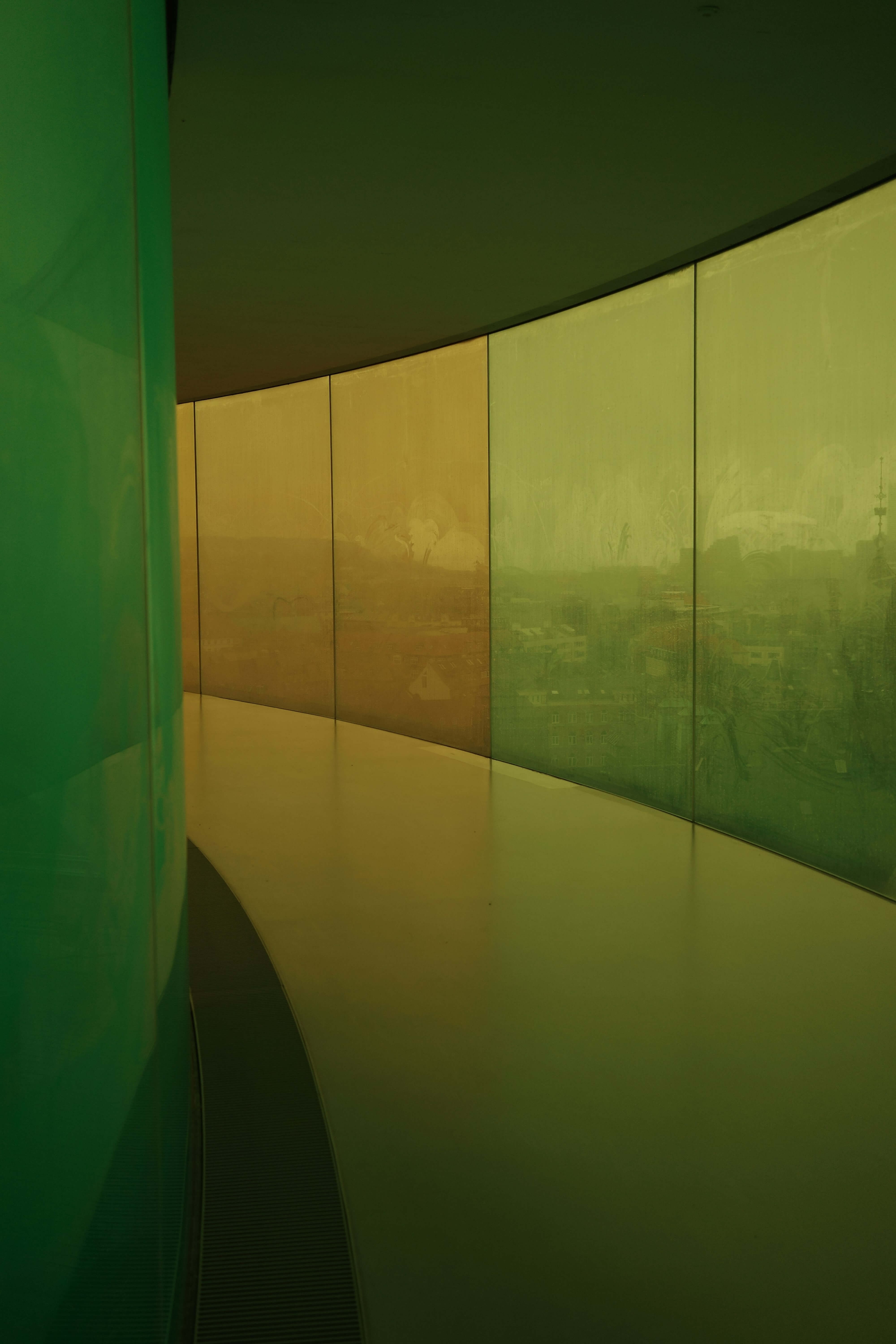 Your Rainbow Panorama Art Museum ARoS, Photo by Simon Takatomi
Your Rainbow Panorama Art Museum ARoS, Photo by Simon Takatomi
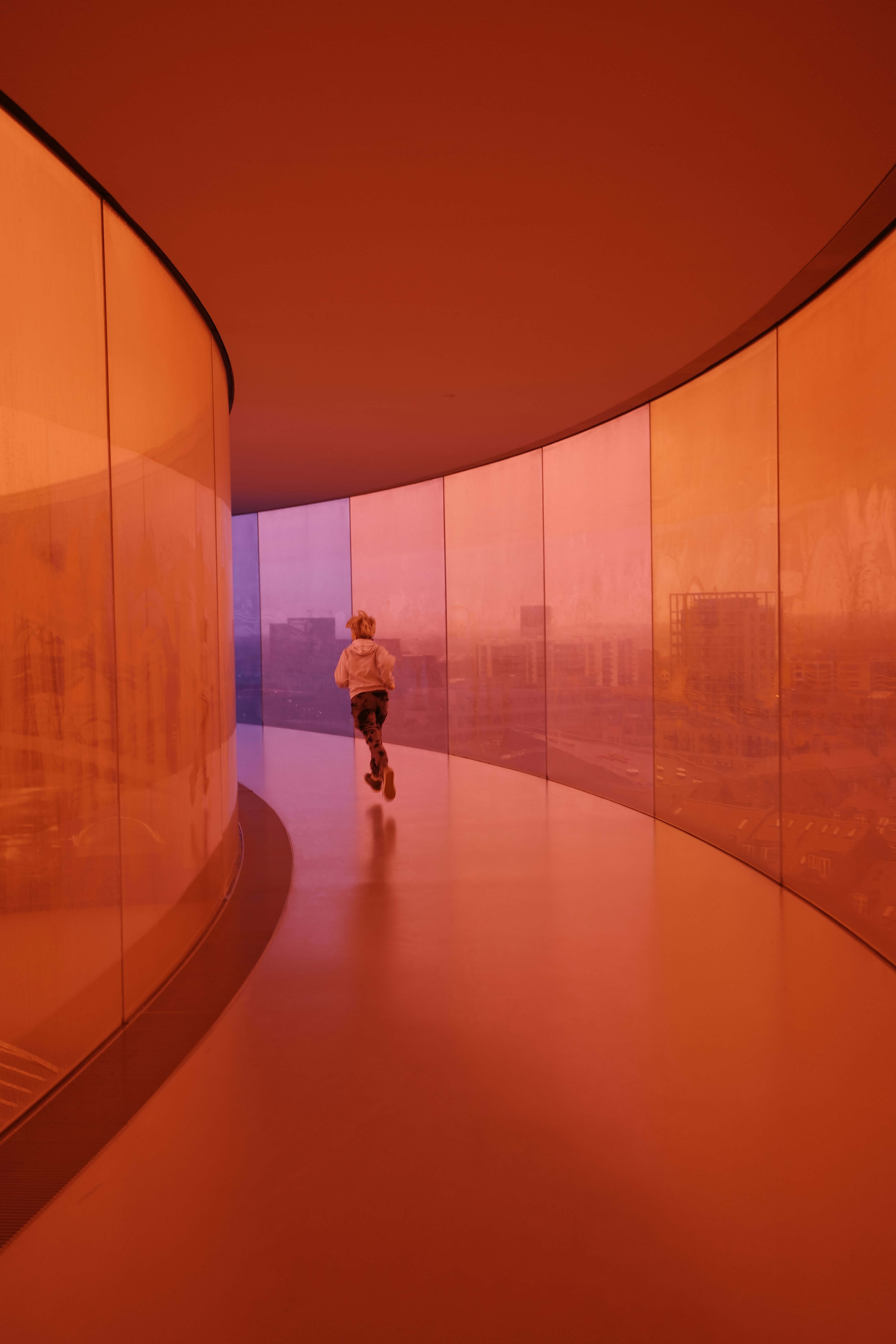 Your Rainbow Panorama Art Museum ARoS, Photo by Simon Takatomi
Your Rainbow Panorama Art Museum ARoS, Photo by Simon Takatomi
Merging with the environment
Anyone who experiences Eliasson's works up close will remember them. His monumental installation of a simulated sunrise in the gigantic Turbine Hall of the Tate Modern in London ("The Weather Project", 2003) attracted 2.2 million visitors. Or his "One-way colour tunnel" (2007), a walk-in sculpture made of coloured glass with kaleidoscopic perspectives. For his "Green River" project (1998-2001), he coloured the water of rivers in various places around the world with a non-toxic green dye. In "The New York City Waterfalls" (2008), Eliasson installed four large artificial waterfalls around the tip of Manhattan, including under the Brooklyn Bridge.
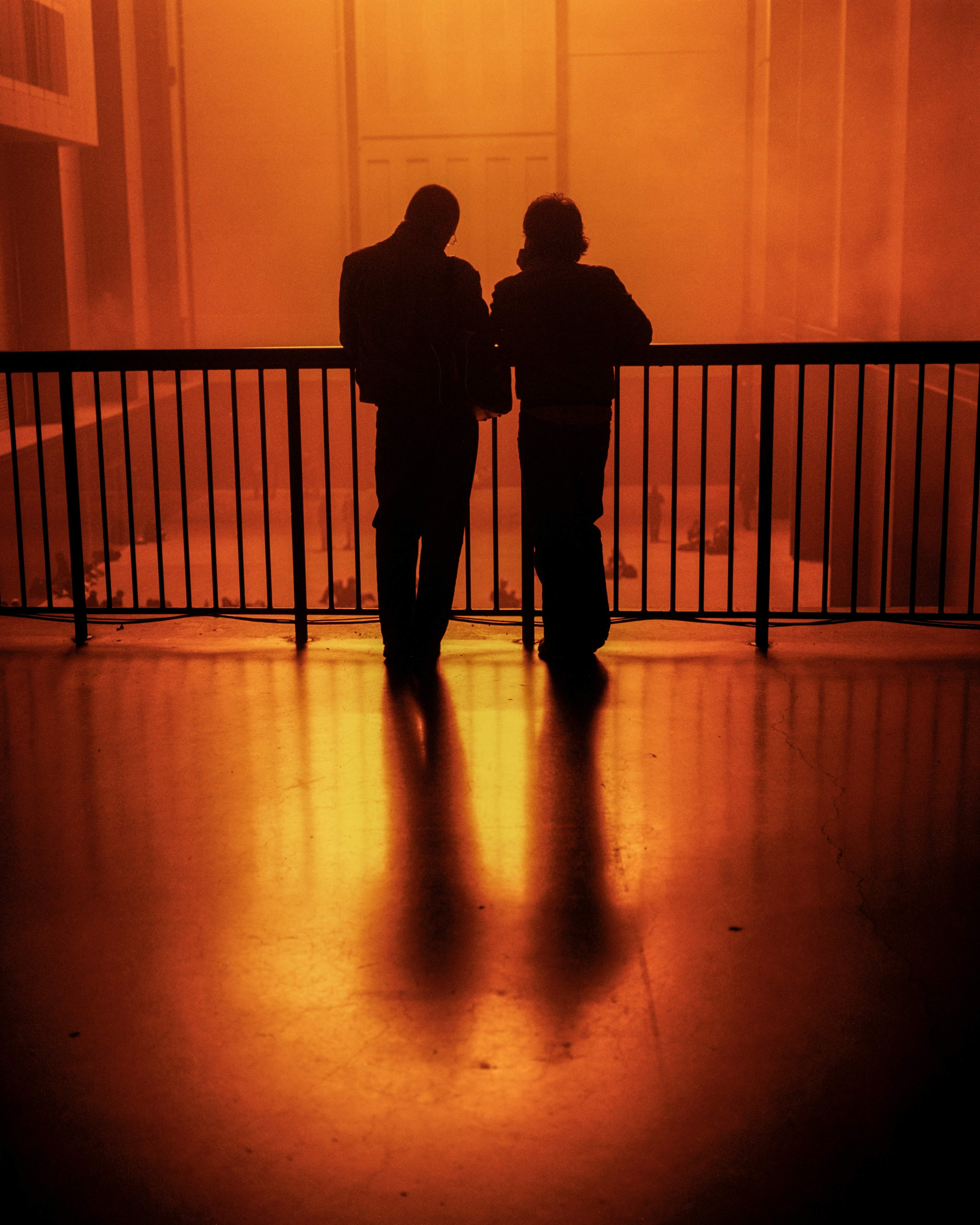 The Weather Project at the Tate Modern in London, Photo by Christer Ehrling
The Weather Project at the Tate Modern in London, Photo by Christer Ehrling
"Your Rainbow Panorama", which has crowned the roof of the ARoS art museum in Aarhus, Denmark, since 2011, is exemplary of Eliasson's approach of combining art with architectural elements. The continuous tour made of coloured glass offers a 360-degree view of the city and allows visitors to wander through a spectrum of colours. The Harpa concert hall in Reykjavík, which opened its doors in 2011, also impresses with a glass façade developed by Eliasson made of honeycomb-like, dichroic glass that changes its appearance depending on the time of day, incidence of light and weather and captures the lighting moods of the surroundings.
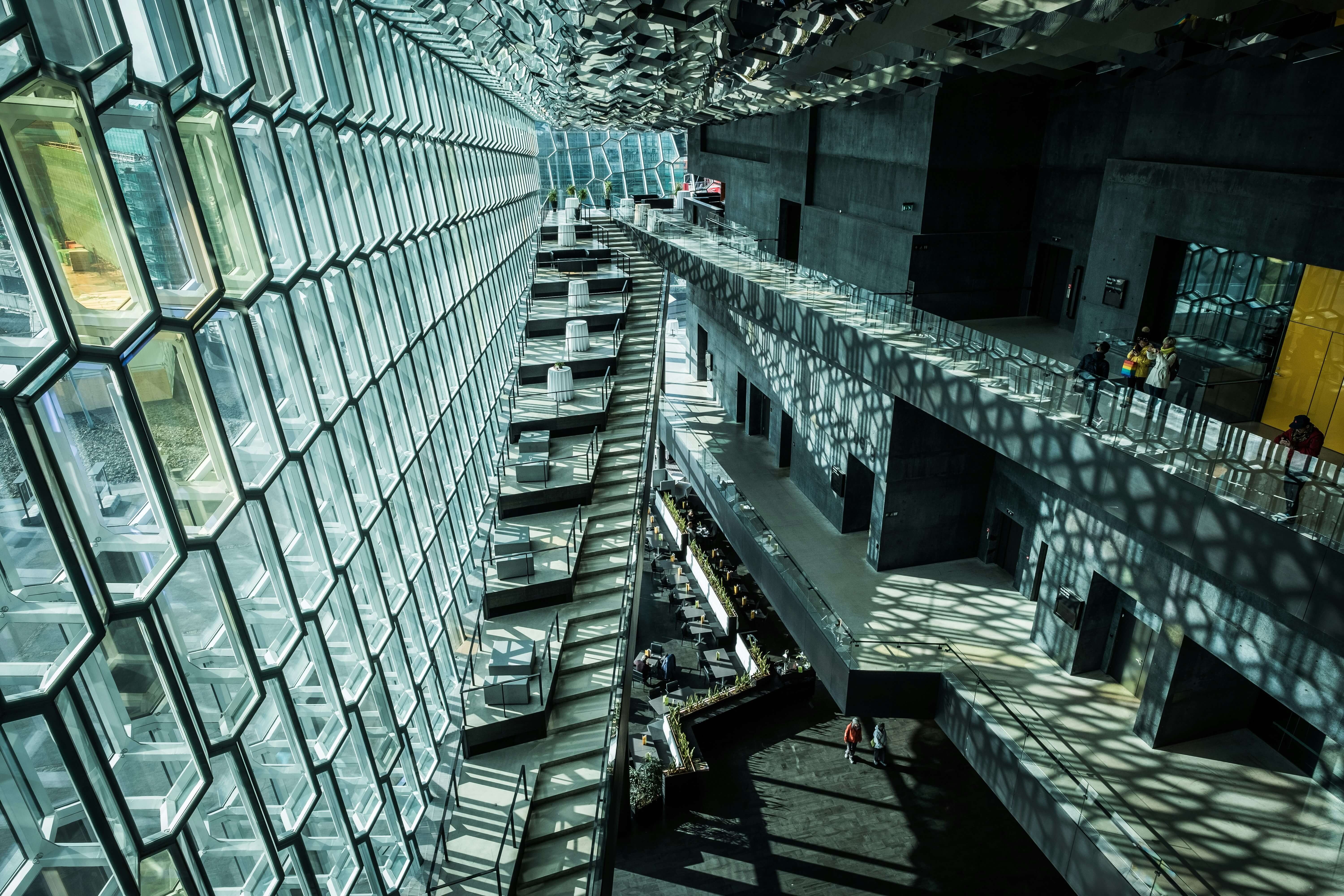 Harpa concert hall in Reykjavík, Photo by Lance Anderson
Harpa concert hall in Reykjavík, Photo by Lance Anderson
In Switzerland, Eliasson made his mark with "Symbiotic Seeing" (2020) at the Kunsthaus Zürich. The exhibition, which explores the human connection to the environment, invited visitors to actively engage in the process of seeing and to question their perception of nature and the climate. The centrepiece was a spectacular illusion of light and clouds that reacted to the gathering of people in the room. For his dystopian nature installation "Life" (2021) at the Fondation Beyeler, Eliasson flooded the interior and exterior spaces of the museum with green water, creating a dynamic work of art that merged culture and nature.
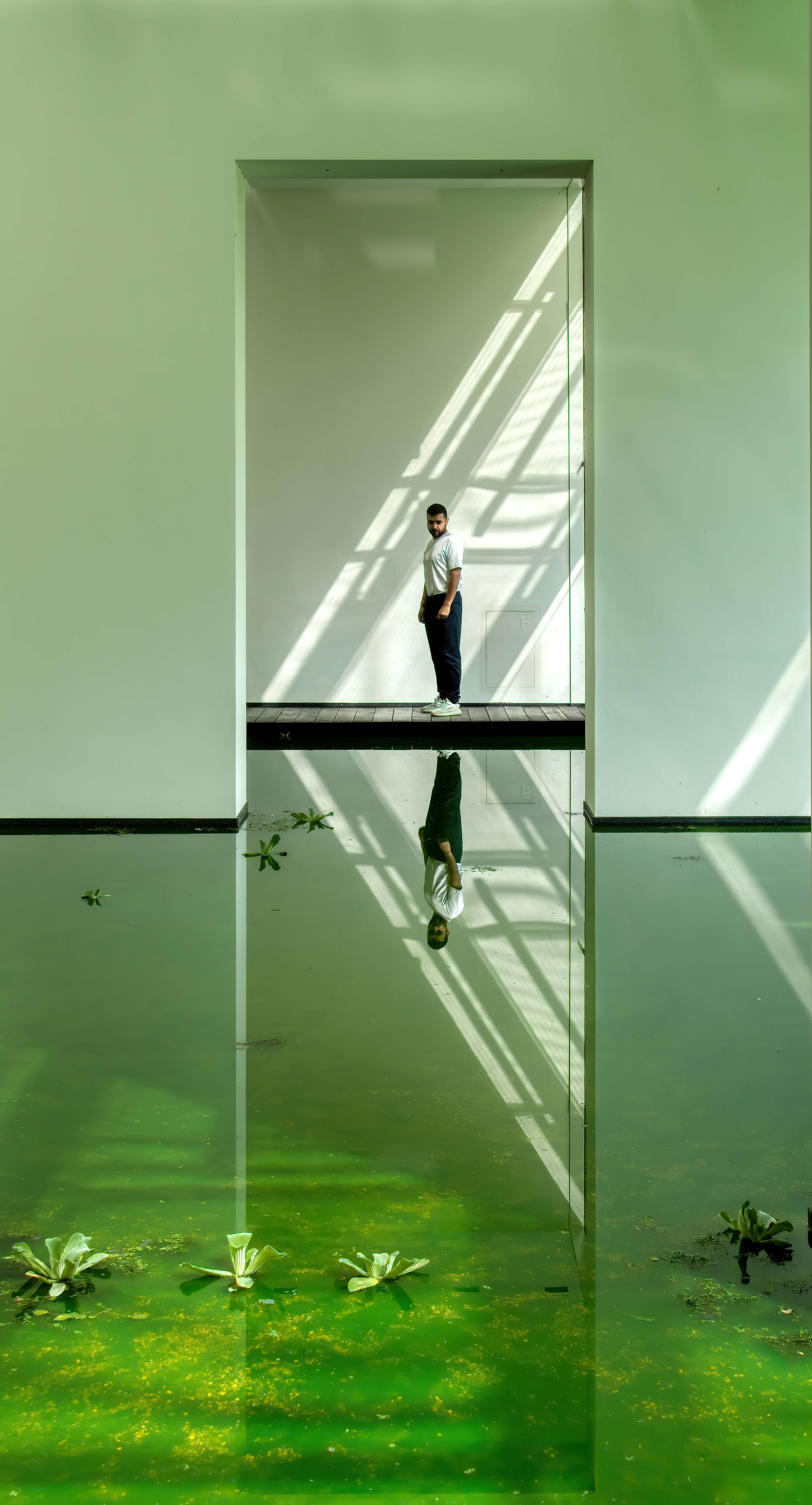 Life at the Fondation Beyeler, Photo by Ricardo Gomez Angel
Life at the Fondation Beyeler, Photo by Ricardo Gomez Angel
Immersive experience
Eliasson's works appear delicate and radical at the same time. They are simple and yet complicated. People who otherwise have little contact with art are just as enthusiastic about them as art connoisseurs and lovers. The works are beautiful to look at and sensual. They fascinate through optical illusions, inspire new perspectives, and make you think - and they are fun. They leave no one untouched.
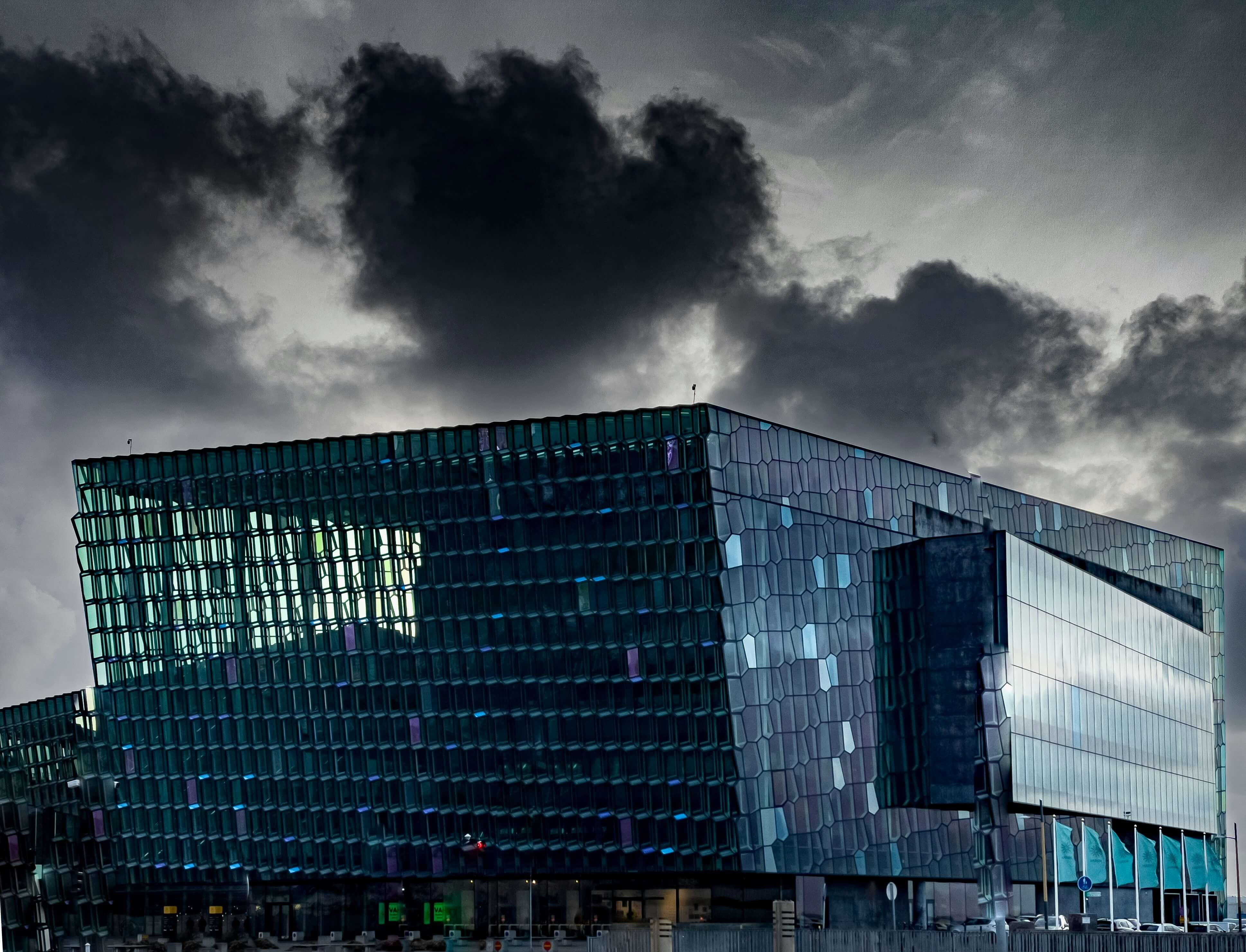 Harpa concert hall in Reykjavík, Photo by Bernd Dittrich
Harpa concert hall in Reykjavík, Photo by Bernd Dittrich
A source of inspiration for light and space
Eliasson's works of art are often also a source of inspiration for interior design, in which light not only plays a functional role but also shapes emotional and perceptual experiences. Sky-Frame pursues a similar goal with its diverse window solutions. Light - whether natural or artificial - has the ability to transform buildings and interiors. Frameless sliding windows can create a limitless and light-flooded spatial experience: A view, not a window.
Text: Linkgroup, Julia Kliewer
Born in Copenhagen in 1967 and raised in Iceland and Denmark, Olafur Eliasson studied at the Royal Danish Academy of Fine Arts in Copenhagen. Today, he lives and works in Berlin. This is also home to Studio Olafur Eliasson, which he founded in 1995 as a laboratory for spatial research, creating a platform for interdisciplinary collaboration and artistic experimentation. The studio team of over 100 employees is made up of artisans and specialised technicians, architects, art historians, designers, filmmakers and more. They all work with Eliasson to develop and realise artworks, projects and exhibitions - but also to experiment, research and communicate.